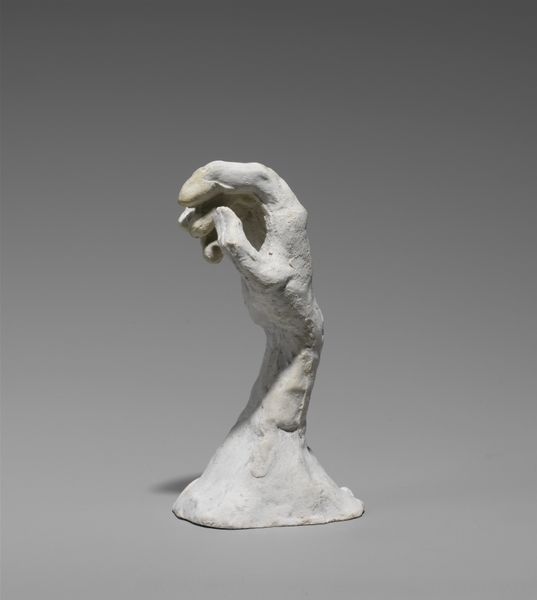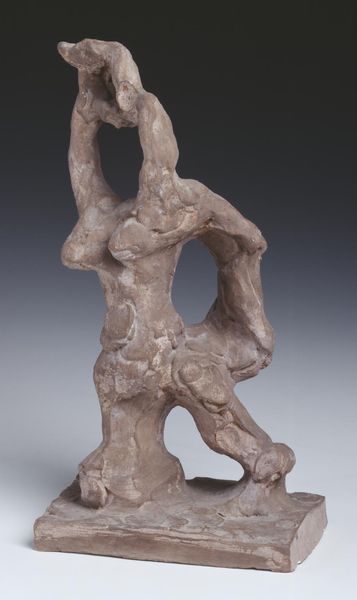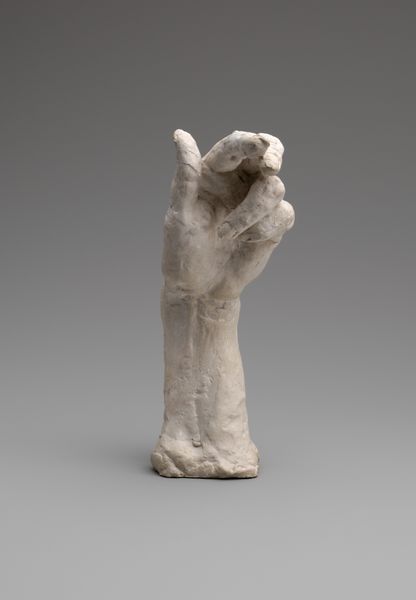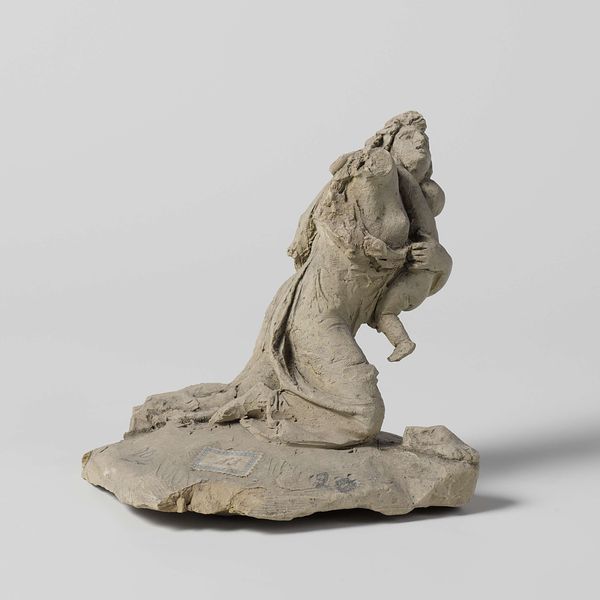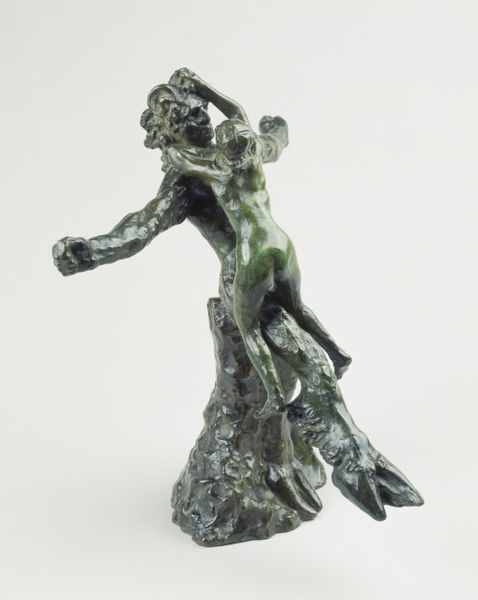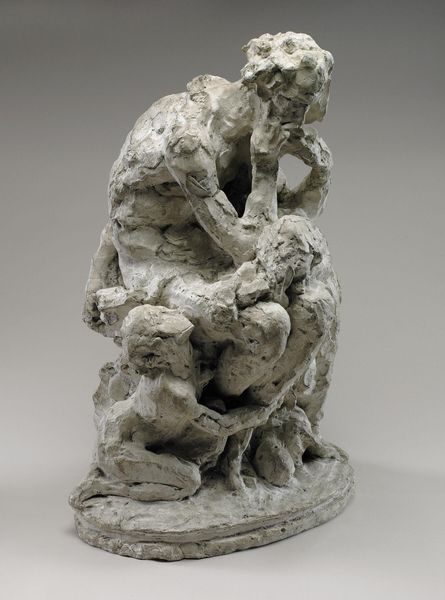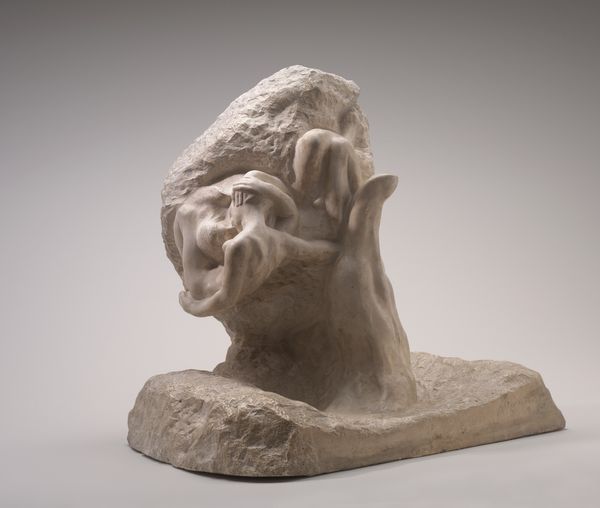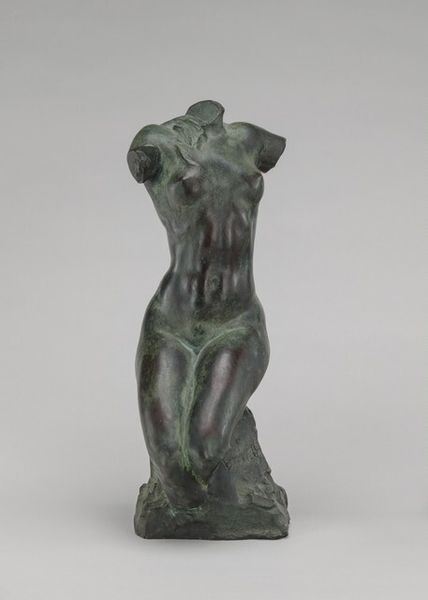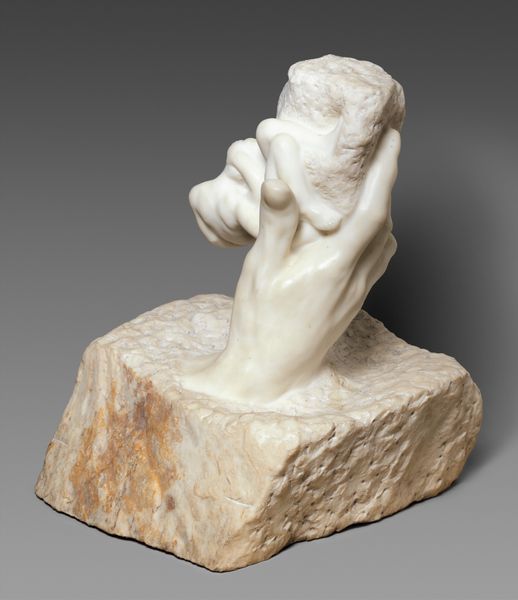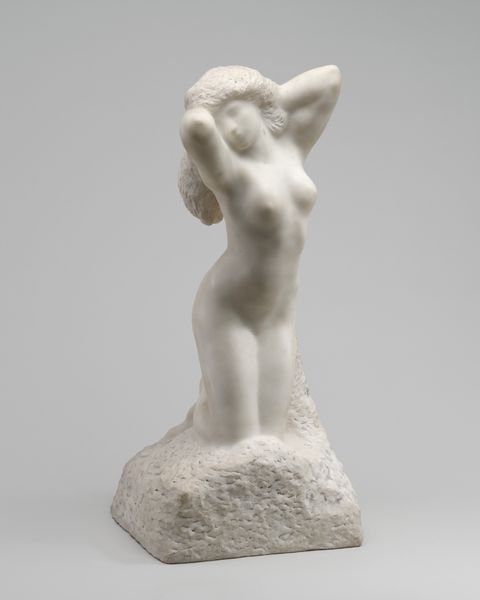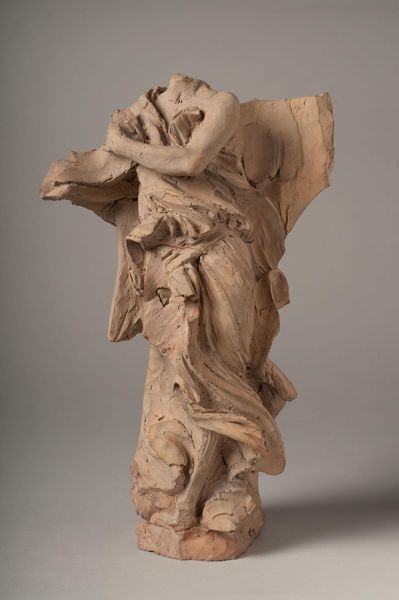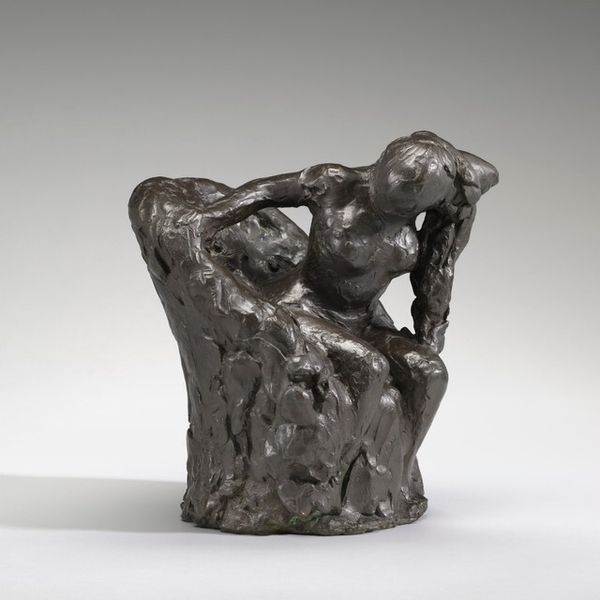
Dimensions: Overall (confirmed): 12 1/4 × 5 × 6 1/2 in. (31.1 × 12.7 × 16.5 cm)
Copyright: Public Domain
Curator: Here we have "Old Woman Standing with Folded Arms," a plaster sculpture crafted by Auguste Rodin sometime between 1880 and 1912, now residing at the Metropolitan Museum of Art. What strikes you first about this piece? Editor: It’s a stark, almost brutal depiction of aging. The texture is raw, unfinished in places. It evokes feelings of vulnerability, the weight of years etched into the very fabric of the sculpture. Curator: Indeed, Rodin's approach challenges traditional idealized portrayals. Unlike academic norms, he highlights the physical realities of age, presenting a counter-narrative to beauty standards prevalent at the time. The sculpture embodies the late 19th century Realist movement's fascination with everyday life, devoid of romanticization. Editor: And there’s a certain stoicism suggested by her posture. The folded arms—they're almost a defensive gesture, yet there's no visible distress on her face. It makes me consider the symbolic role of the aged woman in art and myth. The wise crone, the keeper of secrets, the inevitable future... Curator: A potent interpretation. Given that Rodin did not idealize the human form, particularly as he experimented and grew as a sculptor, this work also can be interpreted in light of debates concerning what can and cannot be regarded as beautiful, acceptable, and ultimately deserving of a museum space. Editor: So it's a social commentary, a challenge to accepted norms of representation. That unfinished quality, those deliberately rough surfaces, become a form of defiance. It compels us to confront the unvarnished realities of human existence. Curator: Precisely. It invites viewers to reconsider conventional standards promoted by cultural and political elites regarding art and beauty, emphasizing the beauty in what society often marginalizes. Editor: A lasting impact. It makes one contemplate not just the subject but the societal structures that define how we see and value individuals. Curator: Agreed. This sculpture exemplifies how Rodin utilized his craft as a tool for social critique, pushing against established boundaries within the art world itself.
Comments
No comments
Be the first to comment and join the conversation on the ultimate creative platform.
